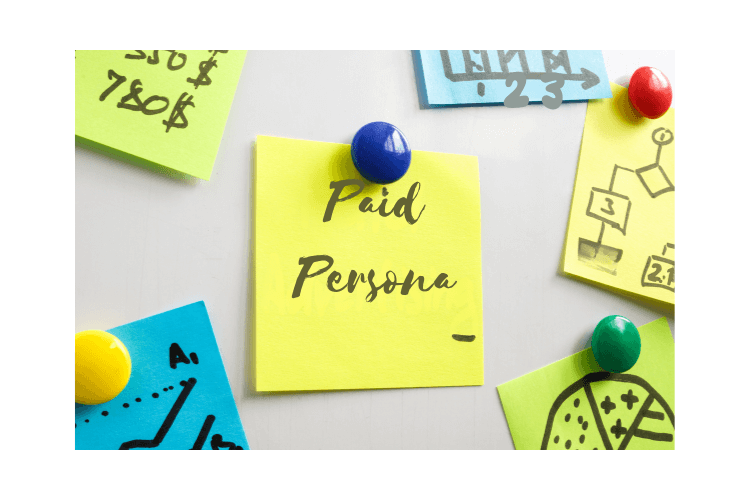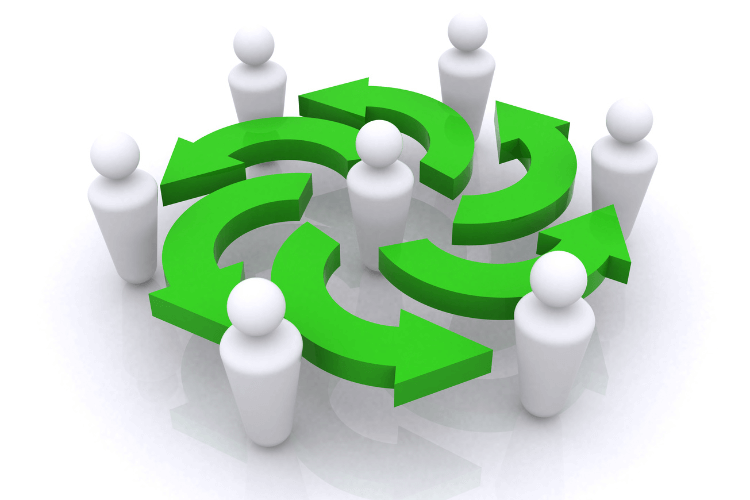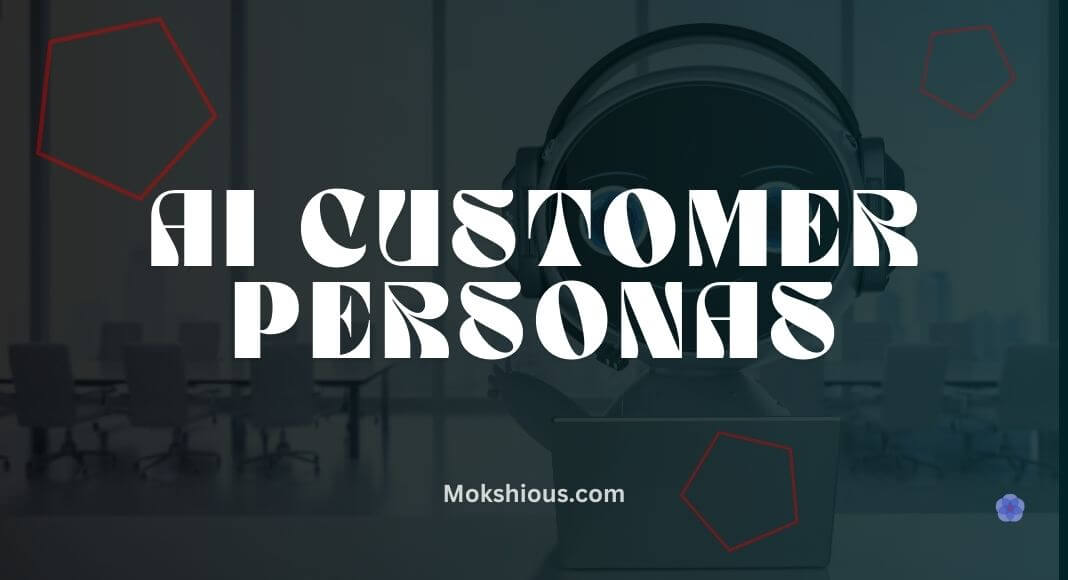Introduction: The Reasons Traditional Personas Are No Longer Effective
Are you still targeting your audience with simple demographics? That could account for your campaigns’ poor performance. You can only go so far with age, location, and job titles. People aren’t just 34-year-old marketing managers; they’re multitasking parents, TikTok scrollers, last-minute buyers, night-time researchers, and skeptical decision-makers with wildly different motivations. That kind of complexity? You won’t capture it with a bullet list of “Age 25-34, Tech, Based in NY.”
Here’s the problem: traditional user personas are stuck in the past. They give you a frozen snapshot when what you really need is a living profile. In today’s landscape, people shift context constantly, scrolling LinkedIn while listening to a podcast, switching from price hunting to binge-saving product reels. Their digital behavior tells the real story.
That’s where AI personas step in. These personas go beyond surface-level demographics and dive into actual user behavior, what they scroll, save, skip, search, and share. They blend behavioral segmentation, voice of customer feedback, platform habits, and pain point analysis to give you precision targeting with emotional intelligence.
And they’re not built on guesswork. You already have the data: GA4 audiences, crm tags, social listening inputs, and ad engagement patterns. It’s all sitting there, waiting to be used smarter.
In this guide, you’ll get a copy-paste framework to build AI customer personas that work across your organic, paid, and crm channels. These are the personas built for the real world, the ones that evolve, perform, and actually help you grow.
AI Customer Personas 2.0, in one page

From “Age 25–34” to “Price-Triggered Comparison Shopper”
Let’s be real: labels like “Marketing Manager, Age 34, NYC” don’t tell you why someone’s not clicking that ad or dropping off mid-funnel. They just give you demographics, static attributes that are easy to sort in a spreadsheet, but tell you nothing about emotion, context, or buying intent.
AI personas 2.0 break out of this limitation. Instead of relying on surface-level traits, they dig deep into how people actually behave. These personas are dynamic profiles built around user behavior, motivations, friction points, and platform-specific habits. They change as your data does. And they give your content team, ad managers, and even product leads something actionable.
So what’s the core shift here?
- From age to activity: Instead of targeting “millennials,” you’re identifying “nighttime price-hesitant comparison shoppers.”
- From job title to job-to-be-done: You’re no longer targeting “IT Decision Makers,” but “overwhelmed sysadmins who need plug-and-play integrations.”
- From demographics to platform habits: You’re aligning your message with people who save LinkedIn posts, DM Instagram stories, or rewatch TikTok explainers three times before buying.
Data sources that fuel AI User personas
You already have most of the inputs you need:
- GA4 events: Scroll depth, session context, page groups, outbound clicks
- CRM records: Win/loss reasons, sales objections, time-to-close trends
- Ad platform signals: Video completions, save rates, carousel interactions
- Social & UGC inputs: Comments that reflect pain points, user language, hesitations
- Session behavior: Bounce rates on FAQ pages, returns to pricing, repeat visits within 24 hours
Even five years ago, this would’ve required an in-house data science team. Today, with tools like Segment, Amplitude, GA4, and a dash of ChatGPT, you can turn raw data into dynamic personas in hours, not months.
Here’s the litmus test for whether your AI customer persona is useful:
- Can it explain why someone hesitates?
- Can it suggest what content would convert them?
- Can it help you choose where and when to show that content?
If yes, you’re on the right track. If not, it’s probably time to evolve.
The Data: Create AI Personas Framework

The secret to creating AI-powered personas that actually convert? It starts with data. Not just any data, but behavior-rich, platform-contextual, voice-of-customer-fueled insight that lets you segment based on what users do and what they feel, not just who they are on paper.
This framework walks you through five key steps:
- Collect: Pull the right behavioral and psychographic signals.
- Cluster: Organize by patterns that reflect motivations and habits.
- Name & narrative: Turn those patterns into compelling, humanized persona stories.
- Map: Align each persona with the right format, message, and platform.
- Govern: Apply AI responsibly, protect privacy, and keep documentation tight.
Each step is designed to be actionable. You don’t need a PhD in machine learning, just access to your analytics stack, a copy of this framework, and maybe a few well-placed prompts to your favorite AI persona generator.
Step 1: Collect
Get data from all your sources:
- ga4 events: clicks, scrolls, views
- crm tags: stages, notes, objections
- paid platforms: ad engagements, view-throughs
- social listening: hashtags, comments, saves
GPT prompt you can use: “Group users based on behavioral signals, platform habits, and comments expressing pain points.”
Step 2: Cluster
Now organize your behavioral personas:
- behavioral segmentation: binge watchers, cart comparers, silent savers
- psychographic segmentation: decision delayers, price-checkers, skeptics
- platform habits: Reddit researchers, TikTok testers, LinkedIn bookmarkers
Example persona table:
| Persona Name | Behavior | Pain Point | Platform Habit |
| trust me tina | Clicks case studies | fear of scams | linkedin carousels |
| scrolling sean | scrolls, no saves | overwhelmed easily | tiktok swipe-throughs |
| budget bella | cart abandoner | price sensitive | instagram stories |
Step 3: Name & Narrativize
Give each cluster life:
- Goal: What are they trying to achieve?
- Pain: What’s slowing them down?
- Triggers: what finally makes them act?
- Hook: testimonial? Calculator? Comparison post?
- Cta: book a demo? See pricing? Download the checklist?
Step 4: Map to channels & formats
| Platform | Ideal persona | Format | CTA |
| trust me tina | carousel w/ quotes | Book a demo | |
| tiktok | scrolling sean | how-to b-roll w/ vo | See use case |
| budget bella | poll + pricing story | explore pricing |
Step 5: Govern with ethics
Quick rules to keep you compliant:
- Before using personal information in LLM prompts, hide it.
- Don’t store persona data forever; set refresh cycles
- label ai-generated personas in internal docs
- document your persona creation process
dpia template:
- data source: ga4, crm, ugc
- Purpose: persona development
- retention: 60 days
- opt-out path: (link to opt-out policy)
Activation Playbooks: AI-Generated Persona

Building AI personas is only half the battle. Now comes the fun (and ROI-driven) part, activating them across your marketing stack. This is where most teams hit a wall: great segmentation, poor execution.
This playbook is your blueprint for translating behavior-driven customer insights into content, ads, and engagement strategies that actually resonate.
You’ll learn how to:
- Turn persona insights into scalable ad and content variations
- Deploy new hooks while doubling down on proven ones
- Time your messaging based on user mindset, not just time zones
- Track the right signals to know what’s working
Let’s bring your AI personas to life, organically and through paid.
Creative matrix for AI personas
Want scalable testing? Build a creative matrix:
- 6 hooks: “here’s what no one tells you…”, “3 warning signs…”, “why [competitor] fails…”
- 4 formats: carousels, stories, reels, static
- 3 CTAs: “learn more”, “get demo”, “explore features”
That’s 72 test-ready combinations per persona.
Explore vs Exploit system
Split your budget:
- 20% for explore: new creatives, wild ideas
- 80% for exploit: what’s already working based on saves, completions
Refreshed weekly to fight fatigue and boost performance.
Context-aware timing by persona type
| Time | Format | Persona type |
| morning | short tips/memes | scrollers on-the-go |
| midday | carousels | info seekers |
| weekend | deep dives | high-intent browsers |
Optimize for the right signals
Forget likes. Optimize for:
- save rates
- profile taps
- assisted conversions
- completion percentage
- click-to-message or inquiry
Paid Persona Development Strategy

Once your AI customer personas are built and tested organically, it’s time to amplify them at scale through paid channels. Think of this as adding fuel to what’s already working, only now you’ve got precision targeting backed by behavioral signals, not guesswork.
Whether you’re running Advantage+ campaigns on Meta, targeting based on job titles on LinkedIn, or using creative-first optimization on TikTok, your AI persona should inform both your targeting and your creative.
Here’s how to roll it out:
- Creative-first targeting: Instead of over-narrowing your audience, lead with persona-aligned creative. Let the platform’s AI do the heavy lifting by feeding it the right bait.
- Custom audiences: Upload CRM segments tied to each persona (like “cart comparers” or “trust skeptics”) and map creative themes accordingly.
- Look-alike audiences: Build from high-converting persona groups, layering behavior and engagement signals.
- Exclusions matter: Filter out users who hide your ads, bounce early, or never engage with deep content. This sharpens your reach and improves CAC.
You’re not guessing, you’re feeding the ad platform personas that already proved their worth in organic reach and engagement.
persona x funnel x format matrix
- Start with broad audiences using persona-aligned creatives
- build custom audiences from crm + website visitors
- Add lookalike audiences from engaged users
- Use negative signals (hides, skips) to refine targeting
Measurement, Feedback Loops & Traditional Persona Creation Lifecycle

Creating AI-powered personas isn’t a one-time project; it’s an ongoing loop. You need to constantly measure, refine, and retire personas just like you would any campaign asset. The key is building systems that track success metrics across platforms by persona, not just by channel or campaign.
Dashboards that tell the truth
A good dashboard answers this question: Which persona is driving the most value, and where?
Here’s what to track:
- Engagement metrics (watch time, scroll depth, saves)
- Conversion metrics (CTR, CAC, ROAS, LTV by cohort)
- Platform-specific metrics (video completion on TikTok, shares on LinkedIn, poll responses on IG)
- Lead quality metrics (CRM conversion rates, deal velocity, demo-to-close ratio)
Cross these with persona identifiers so you can see who’s winning and who’s dragging.
weekly “winner board” archive
Every week, build a 1-pager with:
- Best performing hooks per persona
- Formats that outperformed baseline (carousel, story, B-roll)
- Comments, shares, saves, plus screenshot examples of high-quality replies or DMs
This archive is your “creative intuition insurance.” It helps new team members ramp up faster and keeps your content iterative.
Kill or scale rules
Not every persona will convert. Not every message will land. You need rules.
- Kill if: Completion rate <25% after 1,000 views or ad relevance score drops
- Scale if: Save rate >3%, view-through conversions improve, or LTV > average
Persona performance = audience health. Don’t be afraid to prune the dead weight.
Quick ethics & compliance checklist
Let’s not forget: AI personas use data. And with great data comes great responsibility.
Here’s your non-negotiable checklist:
- Anonymize PII before feeding data into AI persona generators
- Document your data sources, segmentation logic, and refresh cycles
- Use first-party and platform-approved data only, no sketchy scraping or shadow targeting
- Add clear opt-out paths wherever data is collected or reused
- Regularly audit persona relevance and remove outdated profiles
- Label synthetic or AI-generated personas when used in decks, sales enablement, or external presentations
Ethical marketing isn’t just a legal requirement; it’s part of building long-term trust.
Personality development is powerful. Make sure it’s done right.
Track every persona across every channel:
- Reach
- Completion rates
- Save %, scroll depth
- cpa, cac, roas
- Ltv by cohort
Frequently Asked Questions: AI Persona
What’s the difference between a behavioral persona and a buyer persona?
A buyer persona usually reflects intentions or demographics. A behavioral persona focuses on what users actually do, click, scroll, skip, and share across your channels.
Can I use ChatGPT to create personas?
Yes! feed it behavioral clusters, platform data, and pain point summaries. It can help shape persona narratives, tone, and even hook suggestions.
Is this ethical?
If you’re anonymizing data, respecting privacy laws, and not misleading users with AI content, you’re on the right track. Keep a data minimization mindset.
What data do I need to build AI-powered personas?
You don’t need to boil the ocean. Start with GA4 audiences, CRM tags, ad engagement stats, UGC comments, and maybe some Mixpanel session data. If you’ve got social listening tools, that’s even better. The goal is to combine user behavior + pain points + platform habits.
Can I use these personas in paid campaigns?
Yes, and you should. Align your ad creatives with each persona’s mindset and platform behavior. Use lookalike audiences, CRM-based customer segmentation, and creative-first targeting. Don’t over-narrow with demographics; let your AI persona strategy guide the message.
How often should I update or refresh my personas?
Every quarter is a good cadence. Consumer behavior changes fast, especially on social media. Your top-performing persona in Q1 might drop off by Q3. Set a recurring calendar reminder and include persona performance in your quarterly marketing review.
Conclusion
Ai personas 2.0 are more than just marketing buzzwords. They’re the future of audience insights. Built from behavioral segmentation, enhanced by psychographics, and activated through content-format fit, they give you precision, performance, and personalization at scale.
If you’re tired of generic personas and want to start building real connections that convert, start here. Build AI-generated personas from data you already have. Test them. Measure them. Refine them. And most importantly, make them human again.
